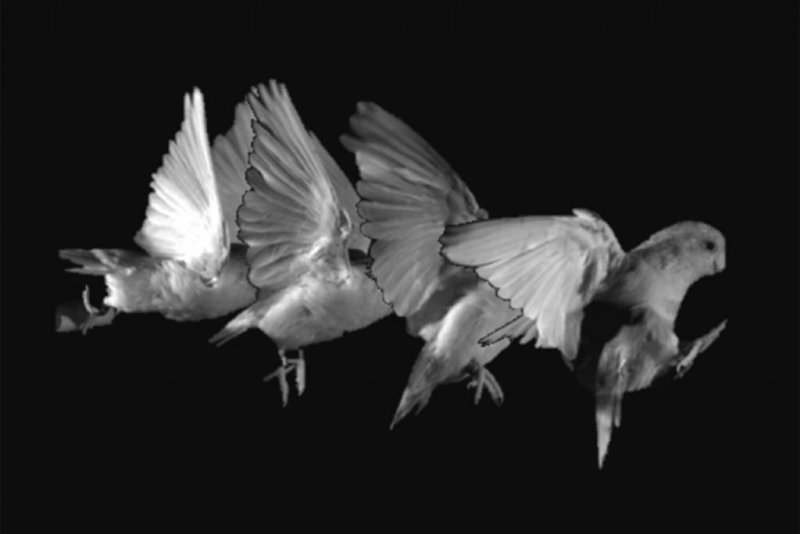Stop-frame photography and force sensor perches helped scientists measure the energy efficiency benefits of the parrotlets' wing-assisted hops. Photo by Diana Chin/Lentink Lab
May 25 (UPI) -- While watching parrotlets hop from branch to branch while foraging, a pair of Stanford researchers hypothesized that the earliest winged dinosaurs may behaved similarly.
Branch hopping might have offered dinosaurs an opportunity to begin experimenting with the advantages of flight.
To see if, for parrotlets, branch hopping was random or calculated, Diana Chin and David Lentink measured the energy exerted by parrotlets as they moved from branch to branch in the lab. Parrotlets are a small species of parrot native to Mexico and South America.
Scientists coaxed the birds across different sized gaps with the promise of a seedy meal. Their research showed the birds used only their legs to hop short distances. Longer distances required flight. But intermediary distances were traversed with a simple hop and a brief flap of the their wings.
The math proved a wing-assisted hop was more efficient than flying.
The research pair considered whether dinosaurs might have benefitted form similarly efficient maneuvers. Wing-assisted hopping might have paved the way for full flight.
Chin and Lentink built a model to test how the efficiency gains of a wing flap might have helped a few small, winged dinosaur species. The simulations suggested the maneuver would have expanded the dines' hopping range by 20 percent.
As bird-like dinosaurs evolved lighter frames and more effective wings, they might have made longer and longer wing-assisted hops, and ultimately developed full flight.
The researchers say their work -- detailed in the journal Science Advances -- isn't an attempt to prove the origins of flight.
There are many plausible explanations for flight, Chin said, and proving the primacy of one over the others is next to impossible.
"There is a lot of existing literature that considers how bird flight may have evolved from running or jumping from the ground, from jumping/gliding from trees, or even from wing-assisted inclined running," Chin, a grad student in mechanical engineering at Stanford, told UPI in an emailed interview. "Rather than trying to insert ourselves into this ongoing debate, the discussion in our paper instead focuses on short flights within trees, which is one of the most common forms of flight today."
Despite the plethora of theories about the origins of flight, Chin said few have looked at short, foraging flights from branch to branch.
"We are not trying to claim that we've figured out how bird flight as a whole evolved," Chin added, "but we do think that we have identified and supported a very plausible explanation for how early birds would have gradually honed their ability to hop and fly between tree branches for foraging."















